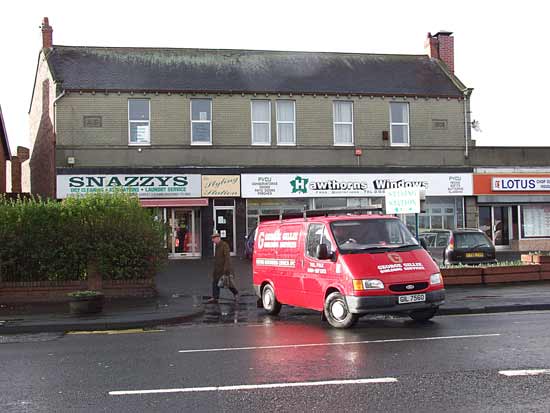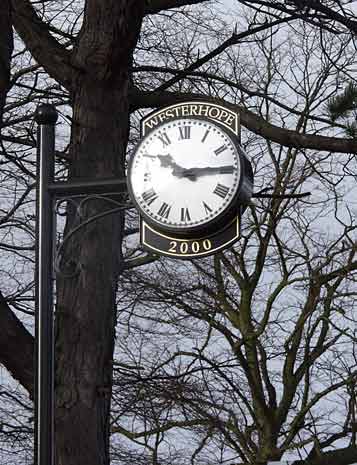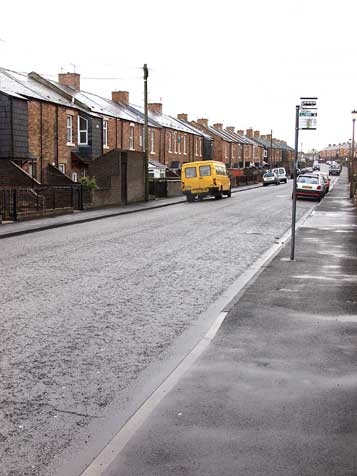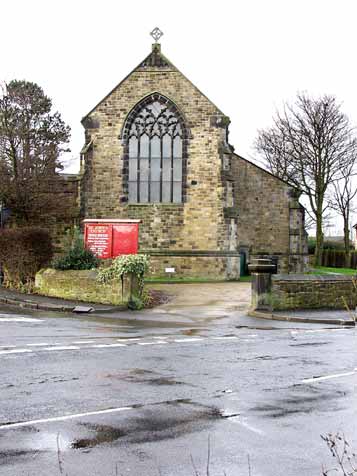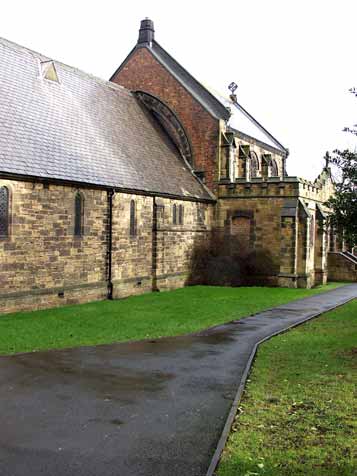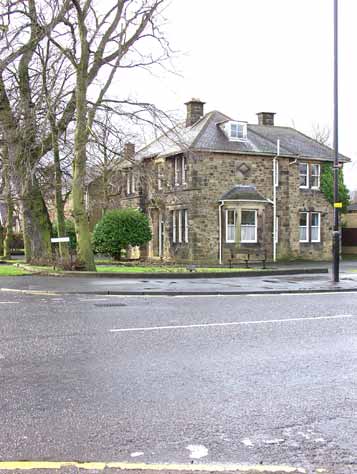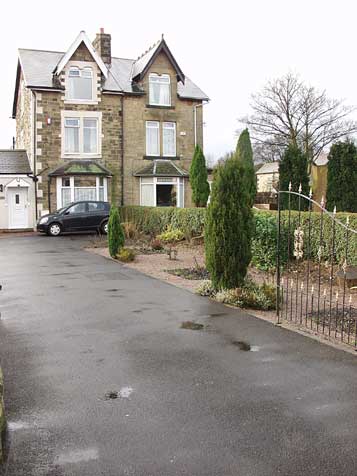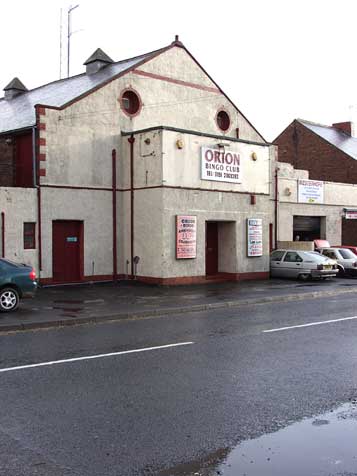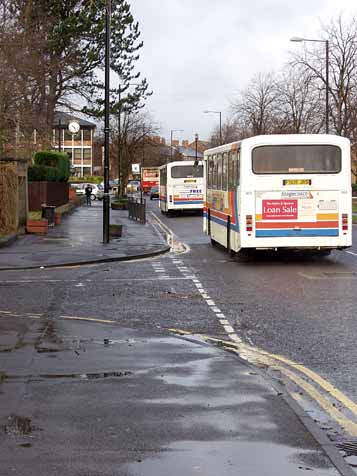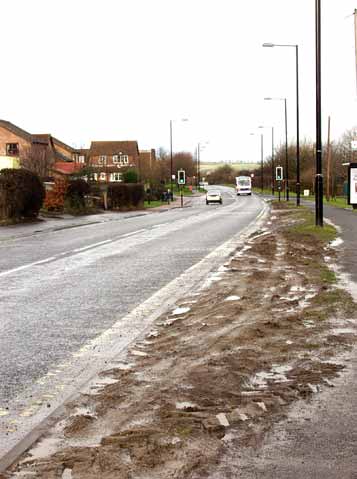|
|
|
Live in Hope
Sat 9th Feb., 2002
|
 |
 |
 |
|
Six and a half kilometres (4 miles) west of the city centre is the once separate village of Westerhope. The
name means a piece of enclosed land to the west.
The village still maintains its independent feel and this Millennium
clock was unveiled on 10th June, 2000, having been paid for by public subscription.
Westerhope also proudly enters and regularly wins the "villages in bloom" competition held every year.
Since
the Local Authority Act of 1974, this village has been part of Newcastle upon Tyne. |
|
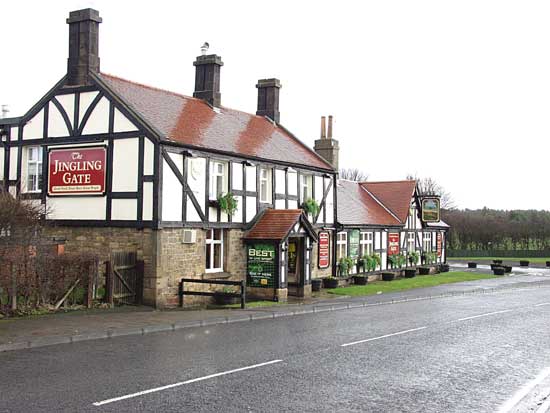 |
 |
|
A remnant of that original village setting is the Jingling Gate pub, the original part of this building being closest
to the camera.
There were two collieries here. Westerhope pit was in the village, and the North Walbottle colliery was a little to the west.
The housing, here at Beaumont Terrace, is typical of
that rushed up to cater for the growing and most profitable activity of coal mining in the late 18th century. Look closely to the left of that yellow van. A small outhouse occupies a prime position in the
tiny yard. This is the remnant of the "earth closet", an early pre sewerage toilet for the occupants.
Weekly carters used to empty the contents from a small hatchway in the roadside wall. |
|
|
|
|
 |
 |
|
Another powerful influence in the life of the people in turn of the 20th century Britain was the church. Here, St
John's, at the head of North Walbottle Road, at the now vanished tiny hamlet of Whorlton, was erected in 1911, and enlarged shortly afterwards.
It was brick built with stone facing and timber roofing.
Its most exciting feature is its eastern window, seen here from the outside. Unfortunately, when I visited today the door was locked and I was unable to get a photograph of the huge swirls of colour in the
stained glass. |
|
 |
|
The lines of the original building are visible here. The outside of the chancel arch shows through the new roof line
of the nave. |
|
|
|
|
 |
 |
|
Back at the village, the 1908 Co-op building is situated at the cross-roads where the east/west Stamfordham Road
meets Newbiggin Lane that leads to the little village of Kenton Bankfoot.
This is still a vibrant retail area, but the arrivals of "Quik Save" and "Aldi" pile it high sell it cheaply warehouse sized
stores at the east of the village have abstracted many customers.
The left picture shows the old Post Office at the corner of Highfield Road. This imposing building has been used for various
semi-public and government purposes since the small corner shop opposite took over the sub-post office role in the early 1980s. It now stands empty, awaiting some speculative development. |
|
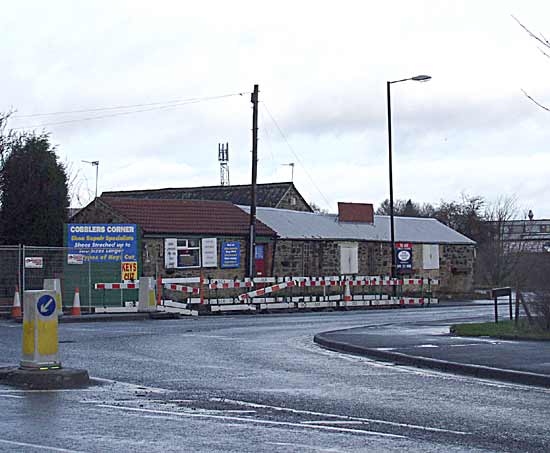 |
 |
|
The Newbiggin Lane roundabout junction is currently undergoing pipelaying. Beyond is the long established Cobbler's
Corner. Here any kind of shoe and boot repair can be purchased and this man carries the most extensive range of keys in the city.
The adjacent building, part of an old farm complex, is presently
vacant. as its fabric and design are protected by local edict, it is difficult to see what activity a prospective tenant might pursue.
Nearer the junction is the romantically named Primrose Cottage.
Back in the main village, the middle class housing typical of the colliery mangers and merchants' dwellings is represented here on the right. |
|
|
|
|
 |
 |
|
In 1912 Sam Piper left a secure and well paid job as Pit Deputy at North Walbottle colliery to start this cinema.
Originally called "The Picture Palace", this rather Spartan building was designed by Lemington architect H. Burrows and seats 450 in a stalls only design, although there was a small 16 seat balcony next to
the projector.
In 1932 Percy Longthorn took over from the Piper family and installed sound, rather later than other theatres in the region.
As the Second World War drew to a close, and optimism
ruled, a new name was chosen by local competition, a device for engendering patronage in the community. The name, the mighty hunter of Greek mythology, won over such luminaries as Wavel and Montgomery
(famous army leaders). It closed for film in 1970 and is now a bingo hall. |
|
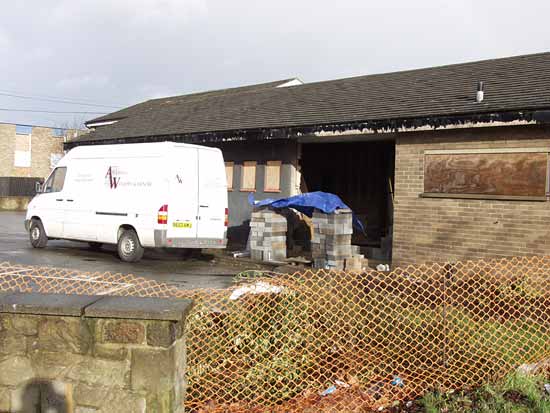 |
|
|
 |
 |
|
The local Police station closed for business recently, and the building is currently being converted to a new
commercial use. In the true sense of capitalistic monopoly the occasional player will go to gaol and not collect £200!!
The view towards the Co-op roundabout shows the position of the Millennium
clock, replacing an earlier version near that bus shelter on the extreme left.
The nearby housing complex of Newbiggin Hall, means that Westerhope is well provided with public transport, and the
Sunblest bakery, to the left past the clock, provides the village's biggest employer.
Below, the site of the ill fated Runnymede public house is now occupied by this supermarket. |
|
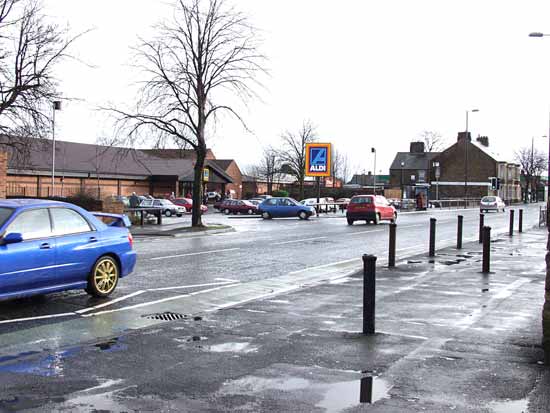 |
|
|
 |
 |
|
The old public house was the irredeemable seat of local villainy and drugs dealers, and was the scene of destructive
gang warfare. It was finally closed in 1997. A similar fate befell the "Newbiggin Hall" a decade or so earlier.
Westerhope has changed from coal to a modern economy with the introduction of much
modern housing. The houses to the left of Stamfordham Road, near those traffic lights, are on the site of Anderson's haulage business. This region used to be black from the coal dust that characterised this
business's sole trade.
The criminal element has diminished, and Westerhope is now a more pleasant place. A recent incomer from Sunderland said that they were pleasantly surprised by the tranquility of
this area, words that would have ben impossible a decade ago. |
|
 |
 |
|
Site and contents (unless otherwise stated) © Tim. Pickford-Jones and Timmonet, Newcastle upon Tyne,
United Kingdom. |
|
 |
|
|
 |
|
If you should arrive here via a search, or be missing the navigation on the left hand side, click this button.
|
|


